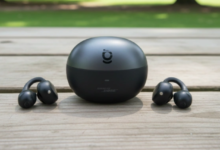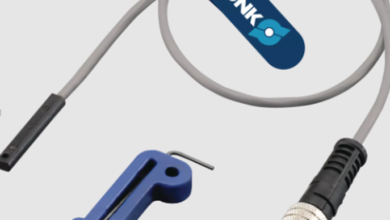Can Smartphones Really Replace Dedicated Video Cameras?

Smartphone cameras have undergone a remarkable transformation in the past decade. What began as simple video recording tools now boast capabilities that rival professional equipment. Modern smartphones can shoot in 4K or even 8K resolution, capture stunning slow-motion footage, and produce cinematic depth-of-field effects. This evolution has made content creation more accessible than ever, allowing anyone to shoot high-quality videos without expensive gear. Social media platforms and streaming services have further accelerated this shift, as vertical formats and quick edits favor mobile workflows. In this article, we’ll examine how smartphones compare to traditional video cameras and help you decide which tool best suits your needs.
1. Image Quality Showdown: Phones vs Cameras
When comparing image quality, modern smartphones often surprise with their performance in ideal lighting conditions. Their advanced computational photography techniques combine multiple exposures to create well-balanced shots with impressive dynamic range. Small sensors have improved significantly, and pixel-binning technology allows them to capture more light than their physical size would suggest. However, dedicated cameras still hold a clear advantage in low-light situations due to their larger sensors that gather substantially more light. Professional cameras also maintain superior color science, providing more accurate skin tones and finer gradations in shadows and highlights. Smartphone videos can sometimes appear overprocessed, with aggressive noise reduction smoothing out fine details.
2. Professional Features Compared
Professional video cameras offer manual controls that provide creators with precise command over every aspect of their footage. Features like interchangeable lenses, built-in ND filters, and professional audio inputs remain largely absent from smartphones. Dedicated cameras allow for proper exposure control through physical aperture rings and shutter speed dials, while smartphones typically rely on software simulations of these effects. The ability to record in log profiles or raw formats gives professionals greater flexibility in post-production, preserving more image data for color grading. Battery life is another critical factor – professional cameras can often shoot for hours on larger batteries, while smartphones may struggle with sustained 4K recording. That said, smartphones counter with incredibly sophisticated stabilization systems that often outperform what’s available in all but the highest-end dedicated cameras.
3. Practical Considerations for Creators
For everyday creators, smartphones offer undeniable practical advantages. They eliminate the need to carry additional equipment, as everyone already has their phone with them at all times. The instant sharing capabilities allow creators to shoot, edit, and publish content from a single device – a workflow that would require multiple pieces of gear with traditional cameras. Smartphone apps provide intuitive interfaces with AI-assisted features that help beginners achieve professional-looking results without technical knowledge. Storage is more convenient too, with cloud backup options ensuring footage isn’t lost if the device is damaged. However, dedicated cameras still win when it comes to ergonomics for extended shooting sessions, with comfortable grips and balanced weight distribution that reduce fatigue.
4. When Phones Actually Win
Portability & Spontaneous Shooting
The greatest advantage smartphones hold is their always-available nature. You can’t capture unexpected moments if you don’t have your camera with you, and smartphones solve this problem perfectly. Their compact size allows for creative angles and movements that would require complex rigs with traditional cameras. Vloggers and travel creators particularly benefit from this portability, as they can film anywhere without drawing attention or needing extensive setup time. The discreet form factor also helps in situations where larger cameras might be intrusive or prohibited. Modern stabilization systems mean you can often shoot smooth footage handheld that would require a gimbal with a traditional camera. For content that values authenticity over production polish, smartphones enable a more immediate, intimate style of filmmaking that resonates with modern audiences.
Computational Photography Advantages
Smartphones leverage powerful AI and machine learning to overcome their physical limitations. Features like night mode use sophisticated algorithms to brighten dark scenes while maintaining detail, often outperforming what’s possible with basic dedicated cameras. Portrait modes simulate shallow depth of field so convincingly that many viewers can’t distinguish them from shots taken with fast lenses. Real-time HDR processing balances challenging lighting conditions automatically, saving time in post-production. Some devices can even remove moving objects from shots or extend the frame digitally after capture. These computational tricks continue to improve rapidly, often through simple software updates that breathe new life into older devices.

5. Who Should Stick to Dedicated Cameras?
Professional Filmmakers & Broadcast Needs
Despite smartphone advancements, professional filmmakers still require the precision and flexibility of dedicated cinema cameras. Projects with controlled lighting, complex camera movements, or specific lens requirements simply can’t be properly executed with smartphone limitations. Broadcast standards often mandate certain codecs and color spaces that smartphones can’t provide. The ability to shoot in higher bitrates with less compression preserves more image information for professional color grading workflows. Timecode synchronization, genlock, and other professional features remain exclusive to high-end video equipment. For projects where every technical detail matters – whether commercial work, feature films, or broadcast television – dedicated cameras remain the only viable option.
Specialized Video Applications
Certain video applications demand specialized equipment that smartphones can’t replicate. Wildlife videography requires ultra-long telephoto lenses that would be impractical on a smartphone. Sports videography benefits from the rapid autofocus systems and high frame rate capabilities of professional cameras. Scientific or industrial applications might need specific sensor types like thermal or high-speed cameras. Underwater videography typically requires bulky housings that would negate a smartphone’s size advantage anyway. In these specialized fields, the right tool for the job remains obvious, and smartphones can at best serve as backup devices rather than primary cameras.
Conclusion The debate between smartphones and dedicated cameras ultimately comes down to your specific needs as a creator. For most casual users and social media creators, modern smartphones like the HONOR X9c with its 108MP OIS Motion Sensing Camera offer more than enough capability. Its advanced stabilization and high-resolution sensor demonstrate how far smartphone videography has come. However, professionals working on high-end projects will still find dedicated cameras indispensable. The ideal solution for many might be a combination – using smartphones for spontaneous or mobile shoots while reserving professional gear for planned productions. As smartphone technology continues to advance, the line will keep blurring, but for now, both tools have their distinct places in the creator’s toolkit







